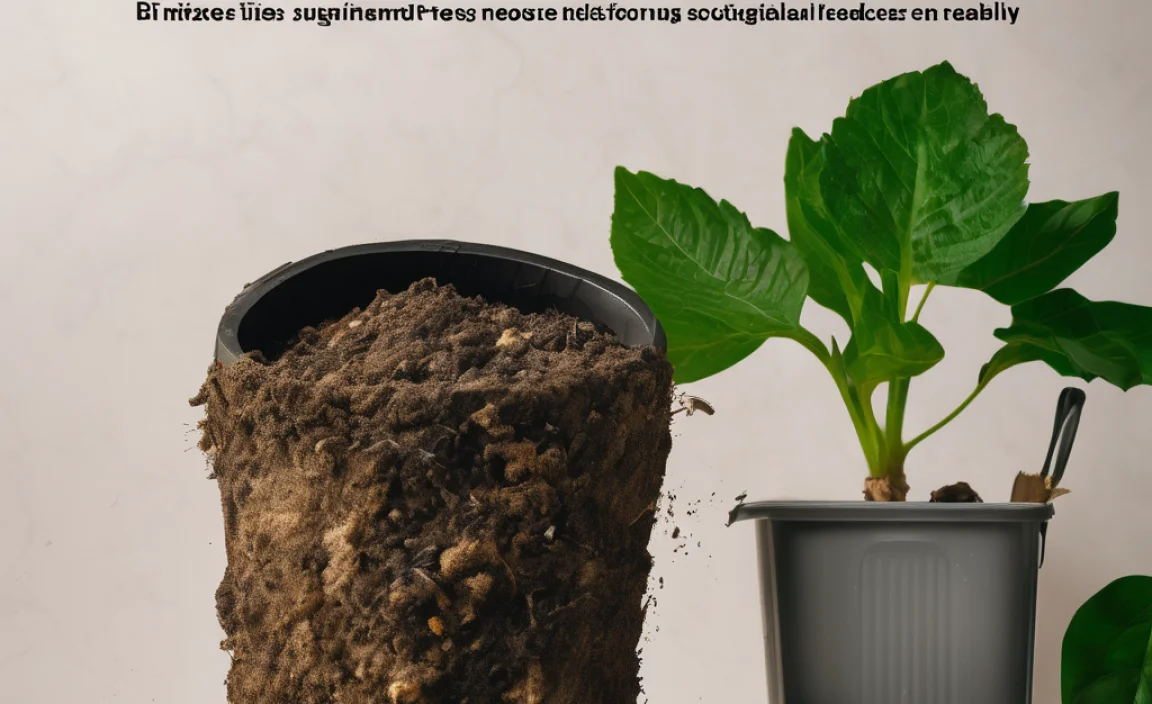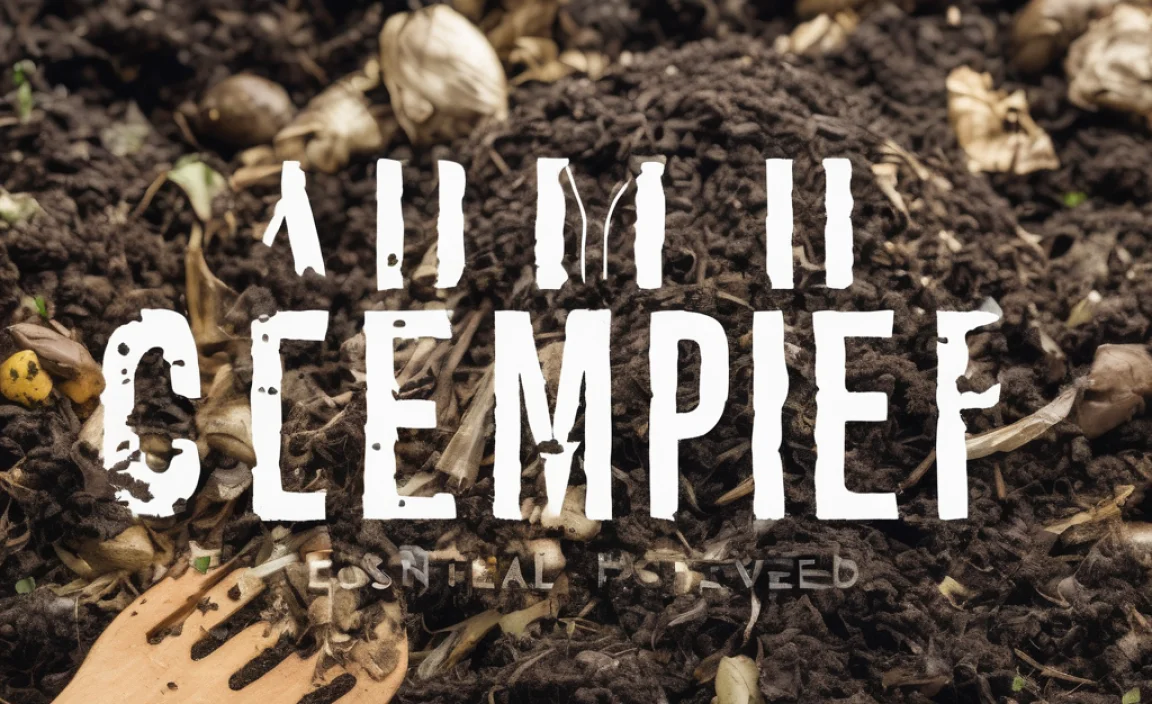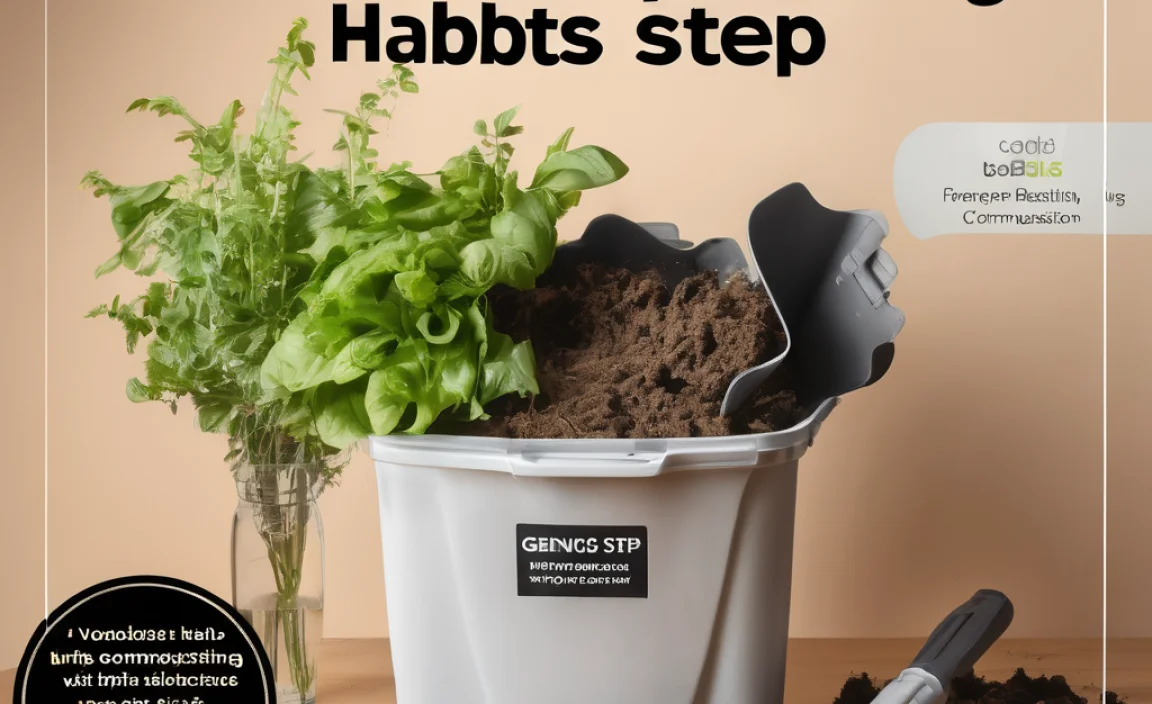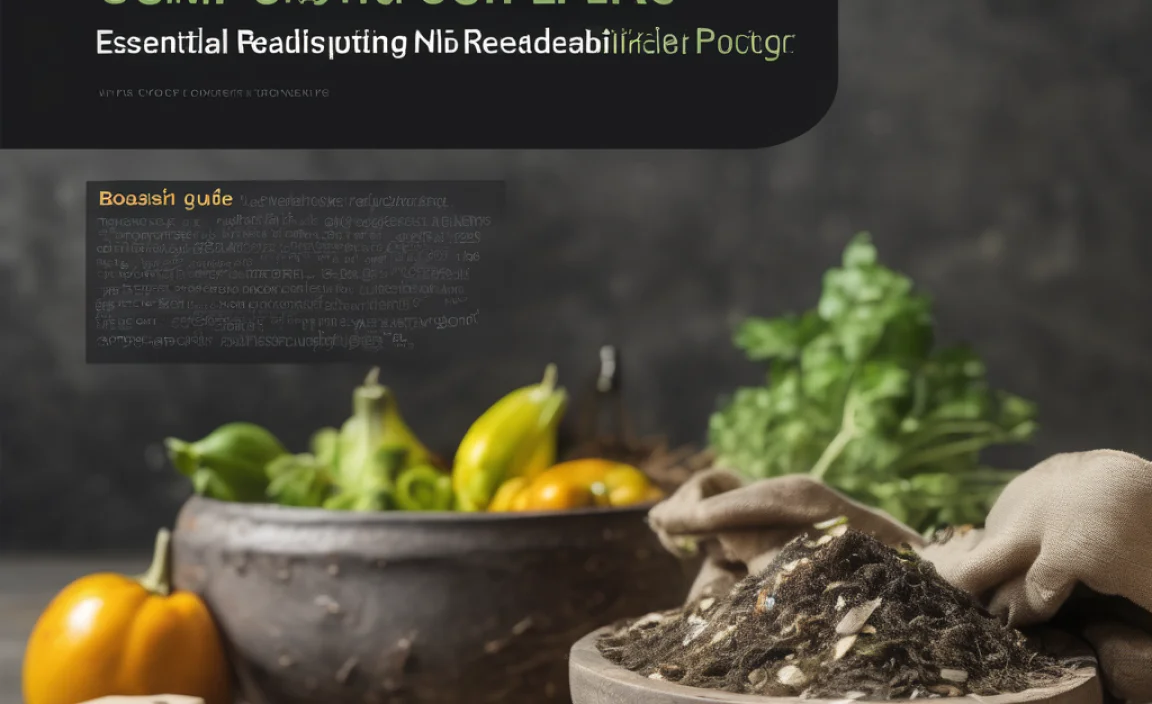Have you ever wondered how plants grow strong and healthy? One secret is compost fertilizer. Using compost makes soil rich and plants happy. But how do we make compost fertilizer? Let’s explore fun and simple ways to make our plants bloom.
Key Takeaways
- Compost fertilizer enriches soil and promotes plant growth.
- There are different compost fertilizer methods to try.
- Turn kitchen scraps into valuable compost at home.
- Learn fun ways to make compost with worms.
- Composting can reduce waste and help the planet.
Compost Fertilizer Methods: Basics
Compost is like a superfood for plants. It’s made by breaking down natural waste. This includes fruit peels, grass clippings, and leaves. To begin, choose a spot in your yard for a pile or bin. Add layers of green and brown materials. Greens are fresh things like veggie scraps. Browns are dry things like leaves. Keep it damp, and turn it once a week. In a few months, you’ll have rich compost for your garden.
- Choose a spot for your compost pile.
- Add green and brown materials.
- Keep the pile moist but not soggy.
- Turn the pile every week.
- Use the compost when it looks dark and crumbly.
Composting is easy and rewarding. By using natural waste, we create valuable food for plants. Compost also improves soil and helps retain water. This means less watering for you and healthier plants. Try starting a compost pile at home. Watch how your garden blooms with joy.
Fun Fact or Stats : Compost can reduce household waste by up to 30%.
Vermicomposting: Using Worms
Did you know worms can help make compost? It’s called vermicomposting. These special worms eat kitchen scraps and produce rich soil. You need a worm bin, bedding, and red worms. Add food scraps under the bedding. Keep the bin out of direct sunlight. Within a few months, the worms will create amazing compost.
- Use red worms for vermicomposting.
- Prepare bedding in a worm bin.
- Add kitchen scraps regularly.
- Keep the bin moist but not wet.
- Harvest compost after a few months.
Why choose vermicomposting? Worms speed up the process. They make compost quickly and efficiently. Plus, it’s fascinating to watch them work. The compost they produce is rich and packed with nutrients. This method is perfect for small spaces or indoor areas. It’s a fun and educational way to recycle kitchen scraps.
Fun Fact or Stats : Red worms can eat half their weight in food each day!
Compost Tea: Liquid Gold
What if you could make a special drink for plants? Compost tea is exactly that. It’s a liquid made from soaking compost in water. This tea helps plants grow strong. To make it, you need a bucket, water, and a bag of compost. Let the compost soak for a couple of days. Then, strain it and use the liquid to water plants.
- Fill a bucket with water.
- Add a bag of compost to the water.
- Let it soak for two days.
- Strain the liquid to separate solids.
- Use the tea to water your plants.
Compost tea is like an energy drink for plants. It provides a boost of nutrients that help them thrive. This method is easy and cost-effective. It’s perfect for giving your garden an extra push. Remember to use the tea quickly for the best results. Enjoy watching your plants grow healthy and vibrant.
Fun Fact or Stats : Compost tea can improve plant growth by up to 30%.
Hot Composting: Speedy Decomposition
Want compost fast? Try hot composting. This method speeds up the process. A hot compost pile reaches high temperatures that break down materials quickly. Start by building a large pile with a good mix of greens and browns. Keep it moist and turn it often. Within weeks, you’ll have ready-to-use compost.
- Build a large compost pile.
- Mix green and brown materials well.
- Ensure the pile stays moist.
- Turn the pile every few days.
- Use compost when it cools down.
Hot composting is perfect for the impatient gardener. It requires a little more effort but rewards you with quick results. This method is ideal for large gardens. The high temperature kills weeds and seeds, ensuring cleaner compost. Give it a try if you need a fast and effective solution.
Fun Fact or Stats : Hot composting can produce compost in just 18 days!
Using a Compost Tumbler
A compost tumbler makes composting neat and easy. It’s a rotating container that speeds up composting. Load it with kitchen waste and rotate it every few days. The tumbler keeps the compost aerated, which speeds up the process. It’s great for those with limited space or time.
- Fill the tumbler with kitchen waste.
- Rotate the tumbler every few days.
- Aeration speeds up decomposition.
- Keep the tumbler in a sunny spot.
- Use compost when it’s ready.
Tumblers are user-friendly and efficient. They make turning compost simple and less messy. This method is ideal for urban gardeners with small spaces. A tumbler fits easily on a balcony or patio. With minimal effort, you can produce high-quality compost right at home.
Fun Fact or Stats : Compost tumblers can reduce composting time by up to 50%.
Compost Fertilizer Methods: A Quick Comparison
Different compost fertilizer methods suit different needs. Some are fast, others are slow but easy. Here’s a table to compare them:
| Method | Speed | Space Needed | Effort |
|---|---|---|---|
| Traditional | Slow | Large | Low |
| Vermicomposting | Medium | Small | Medium |
| Hot Composting | Fast | Medium | High |
| Compost Tumbler | Medium | Small | Low |
Choosing the right method depends on your needs. If you have time and space, traditional composting is good. For quick results, try hot composting or a tumbler. Vermicomposting is perfect for small spaces. Pick the one that suits you best and watch your garden thrive.
Fun Fact or Stats : Over 20% of household waste can be composted.
Conclusion
Compost fertilizer methods are fun and beneficial. They help plants grow strong and healthy. Try one of these methods today. Watch your garden bloom with rich, nutritious compost. It’s good for the earth and your plants.
FAQs
Question: What are compost fertilizer methods?
Answer: Compost fertilizer methods turn waste into plant food. They include traditional, vermicomposting, and tumblers. Each method breaks down organic materials to enrich the soil and help plants grow. Choose a method based on space and time available.
Question: How do I start composting at home?
Answer: Start by choosing a compost pile spot. Add green and brown materials. Ensure the pile stays moist and turn it weekly. Over time, your waste will turn into rich compost, perfect for your garden.
Question: Can I compost in a small space?
Answer: Yes, you can! Use vermicomposting or a compost tumbler. These methods are ideal for small spaces. They quickly turn kitchen scraps into valuable compost. Perfect for urban gardening!
Question: What shouldn’t go in compost?
Answer: Don’t add meat, dairy, or oily foods. These items can attract pests and create odors. Stick to fruits, veggies, leaves, and grass for the best results. Always check if an item is compostable before adding it.
Question: How can composting help the planet?
Answer: Composting reduces waste and enriches the soil. It decreases landfill use and lowers greenhouse gases. Using compost means less need for chemical fertilizers. It’s a simple way to make a positive impact.
Question: Do compost fertilizer methods attract bugs?
Answer: Properly managed compost doesn’t attract bugs. Turn the pile regularly to prevent odors. Cover kitchen scraps with leaves or soil. These steps ensure a healthy, pest-free compost pile.




